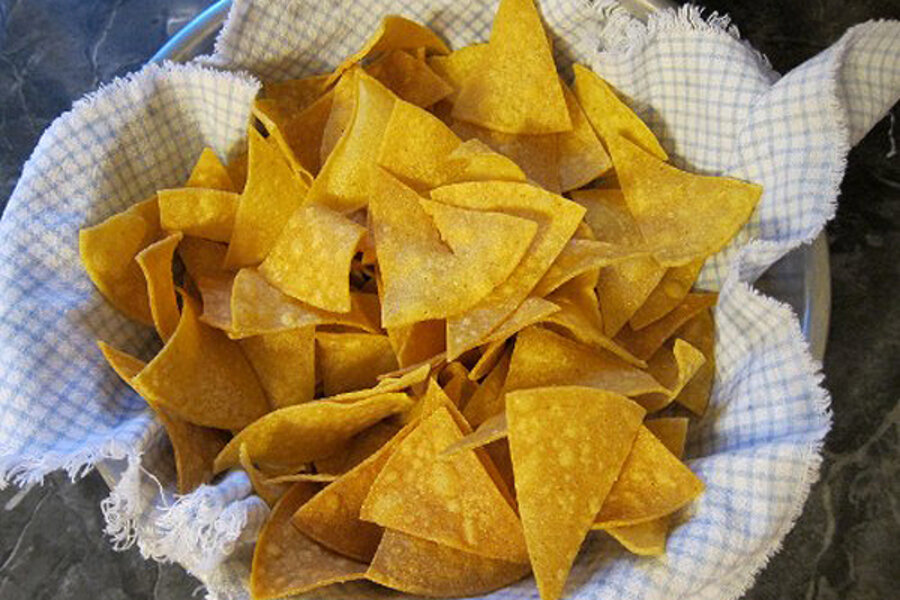By Christina Masters, The Rowdy Chowgirl
Even if you don’t own a deep-fryer, this is an incredibly easy process to replicate at home. It only takes about 10 minutes, and the chips are so much better than anything you can buy in a bag.
Here’s how: A wok is ideal for this, but you could also use a largish heavy-bottomed saucepan in a pinch. Either way, just keep a close eye on your oil during the process and don’t walk away.
Pour about two inches of vegetable oil into the wok, and turn heat to high (or more like medium high on a gas range). Place a stack of six or so corn tortillas on your cutting board, and cut them in half, then in fourths, then eighths. You should now have a pile of tortilla triangles. Continue to cut as many tortillas as you want.
Check your oil by tossing a drop of water in. When it sizzles hard, try a tortilla triangle. It should fry madly, but if the oil is starting to smoke, it’s too hot – turn it down a little. Gently toss in a handful of tortilla triangles. The sizzling and boiling should really escalate. Agitate them around a bit with a slotted spoon or a spider, if you have one.
Chips only take a few minutes to cook. Fish one out when they look crispy but not yet brown and try it. If it’s crunchy they’re done. If it’s leathery, give them another 30 seconds. If they start turning brown, you’ve gone a little too far but they are probably still pretty edible.
Scoop cooked chips from the oil – this is where the spider is especially handy. Put chips in a bowl, salt lightly, and toss another handful of triangles into the oil. Continue this process until you have enough chips – or a little more than enough. Because you’ll be amazed at how delicious they taste.








